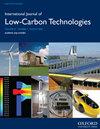Economic assessment of cellulase production in batch and semi-batch solid state fermentation processes
IF 2.3
4区 工程技术
Q3 ENERGY & FUELS
引用次数: 2
Abstract
The vast range of applications for enzymes in the production of biofuels has led to a major increase in market demand in recent years. Cellulase's high cost and poor catalytic efficiency are two key barriers to the industrial usage of lignocellulosic biomass as feedstocks for fuels in biorefineries. In this study, the economic evaluation of cellulase production in solid-state fermentation was done by designing two process routes (batch and semi-batch) to optimize the process. SuperPro Designer Software has been used to create a process model that assessed the economics of fermentation operations while Monte Carlo Software was used to conduct the sensitivity analysis investigation. The impacts of cellulase yield, productivity, aeration rate, and specific power input on the unit production cost (UPC) of cellulase enzyme were studied. The batch procedure requires more sterilized air for the aerobic fermentation process than the semi-batch approach, according to the results. In comparison to the batch fermentation process, the semi-batch approach had a payback period of less than 2 years, an internal rate of return of 39.14%, and a net present value of $142,089,000. The semi-batch process approach has a higher economic feasibility when compared with the batch fermentation process since it is more certain to attain its base case value of UPC at the maximum. This research was key to developing a process pathway that reduces cellulase production costs in solid state fermentation while improving market supply for its use in a biorefinery to produce sustainable fuel.间歇和半间歇固态发酵生产纤维素酶的经济性评价
近年来,酶在生物燃料生产中的广泛应用导致了市场需求的大幅增长。纤维素酶的高成本和低催化效率是阻碍木质纤维素生物质作为生物炼制燃料原料在工业上使用的两个关键障碍。本研究通过设计两种工艺路线(分批和半分批)对固态发酵生产纤维素酶的工艺进行优化,对其进行了经济评价。SuperPro Designer软件已用于创建一个评估发酵操作经济性的过程模型,而蒙特卡罗软件则用于进行敏感性分析调查。研究了纤维素酶产量、生产率、通气率和比功率输入对纤维素酶单位生产成本的影响。根据研究结果,与半分批方法相比,分批方法需要更多的无菌空气用于好氧发酵过程。与分批发酵工艺相比,半分批方法的回收期不到2年,内部回报率为39.14%,净现值为142089000美元。与分批发酵工艺相比,半分批工艺方法具有更高的经济可行性,因为它更确定最大限度地达到其UPC的基本情况值。这项研究是开发一种工艺途径的关键,该工艺途径可以降低固态发酵中纤维素酶的生产成本,同时提高其在生物精炼厂生产可持续燃料的市场供应。
本文章由计算机程序翻译,如有差异,请以英文原文为准。
求助全文
约1分钟内获得全文
求助全文
来源期刊

International Journal of Low-carbon Technologies
Engineering-Architecture
CiteScore
4.30
自引率
4.30%
发文量
106
审稿时长
27 weeks
期刊介绍:
The International Journal of Low-Carbon Technologies is a quarterly publication concerned with the challenge of climate change and its effects on the built environment and sustainability. The Journal publishes original, quality research papers on issues of climate change, sustainable development and the built environment related to architecture, building services engineering, civil engineering, building engineering, urban design and other disciplines. It features in-depth articles, technical notes, review papers, book reviews and special issues devoted to international conferences. The journal encourages submissions related to interdisciplinary research in the built environment. The journal is available in paper and electronic formats. All articles are peer-reviewed by leading experts in the field.
 求助内容:
求助内容: 应助结果提醒方式:
应助结果提醒方式:


